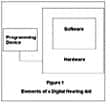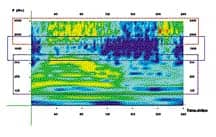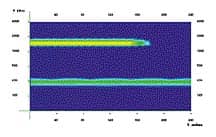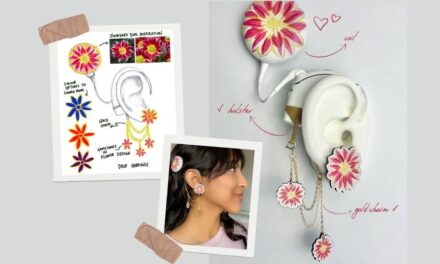
Drs. William and Charles Mayo, the sons of a frontier doctor who served as a Civil War examining surgeon, founded the Mayo Clinic in Rochester, MN, at the turn of the century. Pressed by the demands of their busy practice, the brothers hired several other doctors and personnel and, as the late Dr. William Mayo said, they began to “develop medicine as a cooperative science.” The organization of some of the nation’s first medical specialties, including orthopedics (1912), neurology (1913), thoracic surgery (1915), dermatology (1916) and pediatrics (1917) originated at the Mayo. Today, the Mayo system attracts over a half-million patients each year.
The facility has also attracted some of the world’s best health care professionals from various specialties, including audiology. For example, previous heads of the Mayo’s Audiology Section have included Wayne Olson, PhD, Darrell Rose, PhD and Martin Robinette, PhD, all of whom have made substantial contributions to audiological research and clinical protocols.
While many people think of the Mayo Clinic as being located in Rochester, MN, it actually includes two other important medical facilities located in Jacksonville, FL, and Scottsdale, AZ (see sidebar on next page). Together the three centers employ over 2700 staff physicians and nearly as many residents, fellows and predoctoral students. To provide some idea of its scale, the Rochester Mayo employs a total of 24,000 people while the population of Rochester is only 100,000. Its Audiology Section has 17 audiologists and is led by David Fabry, PhD, while its diagnostic hearing clinic is run by Christopher Bauch, PhD. The ENT Department in Rochester has 14 ENT physicians, four of whom perform ear-related surgeries only. Mayo Clinic Jacksonville employs six audiologists, and Mayo Clinic Scottsdale employs 10 audiologists. David Hawkins, PhD, and Michael Cevette, PhD, are the respective section heads for these facilities.

Because of the Mayo brothers’ innovative approach to medicine, the Mayo Clinic system has also become well known for its use of a multidisciplinary model in caring for patients and finding new treatments and protocols. At Mayo Rochester, the Audiology Section is a division of the ENT Department headed by otorhinolaryngologist Thomas McDonald, MD, a soft-spoken native of Ireland who served for a time as a U.S. Army combat surgeon in the Vietnam War. He contends that the multidisciplinary teamwork at Mayo has more to do with the “Mayo culture” than with any one person’s administrative approach: “It’s part of the Mayo tradition. And if you agree to join the Mayo system, you’re expected to try to get along and/or you’re someone who has been identified as a person who can get along. The Mayo brothers fostered an atmosphere of cooperation and working together with minimal squabbling.”
“One of the things that helps to make that happen is a salaried system without incentives,” continues McDonald. “So, if you’re going to join the Mayo Clinic, you don’t do it for the money. And, particularly, if you’re going to live in Rochester for 30-40 years, you don’t do it for the weather. So working here involves something intangible. If you are lucky enough to be asked to join the Mayo system and if you’re content to remain in it, you’ll find that the intangible is the collegiality.”

This sentiment is echoed by nearly everyone on the ENT/audiology staff. “Mayo is hard to describe, because it is a very unique place,” says Jon Shallop, PhD, an audiologist who works in the Cochlear Implant Department. “It’s a place where there is a lot of interdisciplinary respect. Our department has a wonderful rapport with our surgeons, and basically with everybody at Mayo.”
“In terms of professional leadership, we are blessed with several outstanding individuals,” says McDonald. “For example, Chris Bauch was president of the American Auditory Society (AAS) and Dave Fabry is president of the American Academy of Audiology (AAA)…Another nice thing is that there is no ‘we-they’ type of situation. We’re a team. As an example, Dave Fabry is not only chair of the audiology section, but he is also chair of the research committee for the entire department. So here’s a PhD audiologist leading and looking at, approving and disapproving MD-oriented projects at both the resident and consultant levels in a most intellectual and efficient manner.”
Applied Research at Mayo
The Mayo Clinic is known for its early use, development and innovative applications of new technologies and procedures. According to Dr. McDonald, it’s important to develop experts in specific areas and avoid the phenomena of what he calls “dabbling,” in which numerous professionals engage in a hodgepodge of work. “In other words,” says Dr. McDonald, “one of us becomes well known for and experienced in doing particular procedures. So we let him or her decide on the specifics for the device, like its brand. For example, rather than having 14 surgeons dabbling in many specialties, we’ll have one who is the designated expert in a specific area.”
“It is clear,” says Fabry, “that when the different disciplines and technologies commingle, it directly impacts patient care and makes us more willing to try new things clinically, as opposed to just perfecting established techniques. We have always been an early adopter of new technologies.” He explains that clinicians at all three facilities don’t necessarily follow a “cookbook” of test batteries and are not necessarily tied to established procedures in all cases.
Hearing-Related Research
An abundance of applied clinical research is being conducted at the Mayo Clinic facilities. The following is intended to represent only a sample of this work. While the items below are confined mostly to Mayo Clinic Rochester, applied research is also being conducted at the Jacksonville and Scottsdale centers.
|
Auditory Neuropathy: One example of the success of the multidisciplinary approach is how audiologist Lee Fabry and colleagues in the Audiology, ENT and Genetics departments came to diagnose what is now referred to as auditory neuropathy in two siblings. Without the early work done by audiologist Martin Robinette—who established the clinical foundations for the use of otoacoustic emissions (OAEs) at the clinic—the condition might not have been identified until much later. “Martin is a worldwide expert on otoacoustic emissions,” says David Fabry, “and in 1982 our clinic had an ILO-88 that was in routine clinical use—probably long before most facilities. Because of Martin, we had a lot of data and information on OAEs. So all the audiologists here recognized early on the potential for OAEs in clinical applications.”
The siblings’ parents were the kind that pediatric audiologists dream about having. They did everything possible to ensure that their kids were receiving the best care. The family made trips to the Kresge Institute, House Ear Institute, Boys Town and the Central Institute for the Deaf, where the children were eventually enrolled in school. Having been tested by some of the best hearing care professionals in the nation, the children’s tests came to form much of the basis for test batteries in the identification of auditory neuropathy.
The parents weren’t comfortable with the kind of auditory development that the children were displaying in response to amplification, tactile devices, etc. Eventually, they moved back to Rochester and forced the ethical decision relative to implantation. The parents weighed all the risks, research and unknowns, and decided to try an implant on one of their child’s ears. Jon Shallop, and Lee and David Fabry consulted with George Facer, MD, who was understandably skeptical about the approach.
The implant turned out to be a success. This spurred the parents to have the other sibling implanted with a cochlear implant, and both children have progressed well. The parents and children’s experiences have enabled others who have been diagnosed with auditory neuropathy to consider implantation early on in the process.
According to Shallop, the Mayo team has performed a total of 13 implants on people diagnosed with auditory neuropathy. “The people who are implanted do very well,” says Shallop. “As it turns out, the outcomes for these patients appear to be not all that much different than from other cochlear implant recipients.” A paper on the team’s findings was published in the April 2001 edition of Laryngoscope.
Autoimmune Inner Ear Disease (AIED): Sudden-onset hearing loss can be a terrifying condition for a patient. In many of these cases, ENT physicians will prescribe prednisone. It has been established (with some debate) that prednisone, if administered in an early burst, will help hold off the progression of sudden-onset hearing loss or even restore some of the person’s hearing. The problem is that prednisone is a relatively strong steroid that can cause other types of health problems, including kidney damage. Thus, it cannot be administered for a long period of time.
Each year, about 20-30 patients who come to the Mayo Clinic have sudden-onset hearing loss involving an autoimmune disorder that progresses over a relatively long period of time. Therefore, the use of prednisone would not be as safe and/or effective for these AIED patients.

Mayo Clinic rheumatologist Eric Matteson, MD, immunologist Scott Strome, MD, otologists Colin Driscoll, MD, and Thomas McDonald, MD, have been working with methotrexate and a newer drug called Enbrel, which are immunal suppressive agents that may serve as a substitute for prednisone. These drugs are thought to be safer to administer over the long-term and have been shown to stabilize hearing in a manner similar to prednisone.
“The audiology department monitors over time whether we’re seeing stability or improvement in these patients,” says David Fabry. “And, really, the audiologists’ role is that if, after the initial prednisone burst, the AIED patient shows stabilization or improvement in hearing thresholds, then they are a candidate for the methotrexate study. If they do not, then they’re not a candidate and other strategies have to be looked at.”
The researchers are currently working on a clinical test battery, and looking at the presence of a heat-shock protein, called HSP-78, and other potential markers for corticosteroid responsiveness. They have also been looking at the use of PET scans in order to identify and monitor the disease.
Vestibular/Balance Research: Robert Brey, PhD, who heads Mayo Rochester’s Vestibular/Balance Laboratory, Dr. Kenton Kauffman, the department chair of the Biomechanics Laboratory, and graduate fellow DR Li-Shan Chou, have been working on balance problems in elderly patients. The Vestibular/Balance Lab, which is staffed by five audiologists and a physical therapist, conducts vestibular analysis on patients, while the Biomechanics Lab conducts gait/motion analysis using 6-8 video cameras to record how the patients walk.

Brey and colleagues recently concluded a study that looks at a group of 10 patients who have traumatic brain injury, along with a control group. One of the findings is that patients with traumatic brain injuries do have organic problems that can be measured. “The study definitely shows that, when patients with traumatic brain injury complain of balance-related problems, they really should receive a full vestibular evaluation,” says Brey.
Since 1996, Brey and his colleagues have also been developing models of the inner ear with the help of the Mayo Bio-Imaging Laboratory. The lab has software that takes data from MRIs and CT scans, as well as data from cryogenic slices, and uses the information to construct three-dimensional images of the inner ear.
Cochlear Implants: The Mayo Clinic system is well known for its work with cochlear implants and its development of protocols for implantation. For example, Mayo audiologists Anna Peterson, MA, and Darrell Rose, and surgeon George Facer (the latter two are now retired) have been involved in cochlear implants since the early 80’s.
According to Dr. Driscoll, cochlear implant technology is moving ahead on several fronts. “The newer electrode arrays are closer to the nerve cells that we’re trying to stimulate, therefore lowering the power consumption rates required by the device. This hasn’t really been shown to improve performance, but reduction of power is very important in terms of the kind of speech processing capabilities these devices can offer.
|
“The other major push is in the speech processing or sound coding,” adds Dr. Driscoll. “We can’t present the entire electronic representation of the signal to the cochlea because there is too much information. So the key is in trying to select what’s most important to deliver, and solving this question is instrumental in figuring out how to make people hear better.”
Shallop says that the progress in cochlear implant outcomes during the last 20 years has been remarkable. “Today, we ask people who’ve received the implants, ‘Can you talk on the phone?’ We wouldn’t have even considered that in 1980. Additionally, the requirements for getting a cochlear implant have broadened as the devices have improved. People who have sentence recognition up to 60% can now be implant candidates, and 10 years ago that would have been out of the question.”
Magnesium Deficiencies and Hearing Loss: Based on previous ABR studies of magnesium deficiency using magnesium-depleting ototoxic drugs of furosemide (Lasix) and gentamicin, Cevette and his colleagues investigated ototoxicity using distortion product otoacoustic emissions (DPOAEs) in cancer patients treated with cisplatin. “Although we didn’t have a large enough patient sample, the study did suggest that there were large fluctuations and changes that we could pick up on the OAEs,” says Cevette. Currently, he is involved in a protocol development with the Endocrinology Department looking at Type 2 diabetes and magnesium deficiency.
According to Cevette, the Scottsdale facility has a number of ongoing clinical research projects and has looked at topics like aphysiologic performance on posturography, and has been involved in the trials of both the Advanced Bionics and Cochlear Corp. implants along with the other two clinic sites.
Clinical Application of New Amplification Technology
The audiology clinic at the Rochester facility has been experimenting with remote teleprogramming of hearing instruments for about eight years. According to Fabry, the technical aspects of teleprogramming are fairly easy, and involve ensuring that the hardware is compatible and that the lines between the patient and practitioner are fast enough.

The expense of the hardware, staffing and professional issues, however, may continue to limit teleprogramming technology. But Fabry contends that, if one looks at the evolving marketplace (i.e., PCMCIA cards, etc.), it is possible to envision how this technology might evolve: “All you need to do is look at some of the market penetration data to understand that we need to try some new things, while protecting everyone’s best interests including the consumer, the practitioner and the industry. And, in this case, the devil may be in the details.”
The Clinic has also conducted work that has helped spark a renaissance in directional hearing instruments. “The real directional microphone explosion, to some extent, took off around the time that we did a study [published by JAAA in 1995] with Michael Valente and Lisa Potts from Washington Univ. looking at the effectiveness of what may be viewed as the second wave of directional microphones,” says Fabry. “It has been a lot of fun to see directionals come back into vogue. Through these devices, clinicians are producing situations where performance in noise is actually being improved by amplification. In some ways, our work echoed Hawkins & Yacullo’s study back in 1984, which came at a time when the hearing industry was in transition from primarily BTE to ITE devices. It took the field almost 15 years to get back to the concept of directionality.”
Hawkins is also encouraged by the renaissance in directional instruments, but believes that the future of FM technology holds even greater promise for hearing instrument users. “I think the trend in directional hearing instruments is terrific,” says Hawkins. “And while a 3-4 dB improvement in signal-to-noise ratio is great, it’s still kind of a first-order treatment of the problem. You might imagine what it would be like to go out with a group of people for dinner, and you just hand each person a 1-inch by quarter-inch clip that attaches to their shirts or blouses, and you are able to pick up their voices in a noisy restaurant. It would be phenomenal to have that technology in that kind of system with multiple microphones. I think it will happen eventually.”
Fabry believes that one of the most gratifying things he has seen in the last five years is prescriptive fitting techniques moving from the prescription of a single target for all input levels to multiple target fitting formulas. His department has been involved in the trials of several digital instruments. Mayo Clinic audiologists have also served as scientific advisory board members for the development of middle ear implants for a number of years, and Mayo Clinic Rochester recently implanted their first Symphonix device in a patient.
Fabry believes there are excellent opportunities for doing clinically applied research in cooperation with product developers, and the three Mayo Clinic facilities, as early adopters of technology, have a history of working closely with product researchers. “Many of the projects,” says Fabry, “more or less arose from our work experiences in the clinic and all of the projects had an underlying focus: ‘How can all the technology being developed and all the research being performed impact my patient?’ And, clearly, our work with companies like Songbird, Decibel and [Hearing Component’s] Robert Oliveira, PhD, all fall into a similar vein. That is, how do we broaden the hearing instrument market and reach more patients with quality products? And how do we assist the industry to manufacture better products at lower prices while meeting the needs of the patient?”
Acknowledgements
The Hearing Review would like to extend its thanks to the Mayo Clinic staff members who took time out of their busy schedules to be interviewed for this article. We also extend special thanks to David Fabry, and to Polly Gilgenbach and Lee Aase in the Mayo Clinic’s Communications Dept. for all their assistance with this article.


.gif)

